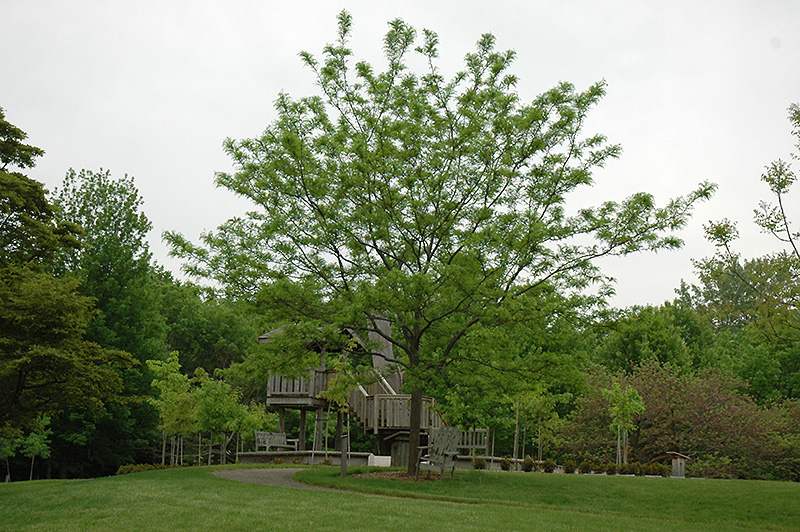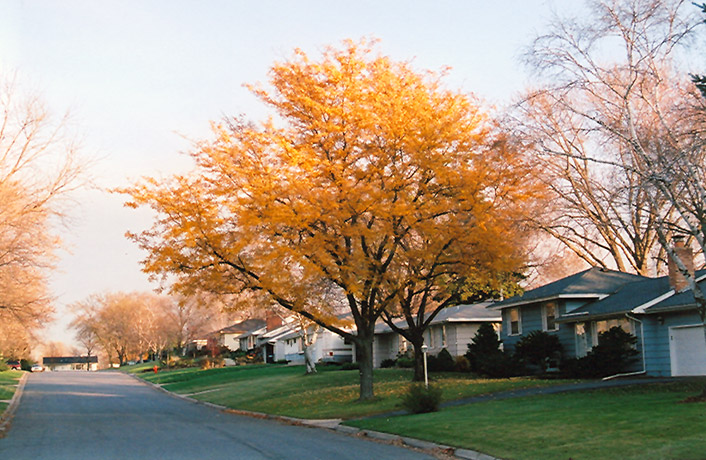Imperial Honeylocust
Gleditsia triacanthos 'Impcole'
Height: 35 feet
Spread: 30 feet
Sunlight:
![]()
Hardiness Zone: 4a
Description:
One of the finest and most popular shade trees, valued for its delicate, ferny appearance which casts a dappled shade below; broad spreading habit of growth, very tolerant of adverse growing conditions, good fall color; a seedless variety
Ornamental Features
Imperial Honeylocust has rich green deciduous foliage on a tree with a round habit of growth. The pinnately compound leaves turn an outstanding yellow in the fall.
Landscape Attributes
Imperial Honeylocust is an open deciduous tree with a more or less rounded form. It lends an extremely fine and delicate texture to the landscape composition which can make it a great accent feature on this basis alone.
This is a relatively low maintenance tree, and is best pruned in late winter once the threat of extreme cold has passed. Deer don't particularly care for this plant and will usually leave it alone in favor of tastier treats. It has no significant negative characteristics.
Imperial Honeylocust is recommended for the following landscape applications;
- Shade
Planting & Growing
Imperial Honeylocust will grow to be about 35 feet tall at maturity, with a spread of 30 feet. It has a high canopy with a typical clearance of 7 feet from the ground, and should not be planted underneath power lines. As it matures, the lower branches of this tree can be strategically removed to create a high enough canopy to support unobstructed human traffic underneath. It grows at a fast rate, and under ideal conditions can be expected to live for 70 years or more.
This tree should only be grown in full sunlight. It is very adaptable to both dry and moist locations, and should do just fine under average home landscape conditions. It is not particular as to soil type or pH, and is able to handle environmental salt. It is highly tolerant of urban pollution and will even thrive in inner city environments. This is a selection of a native North American species.


